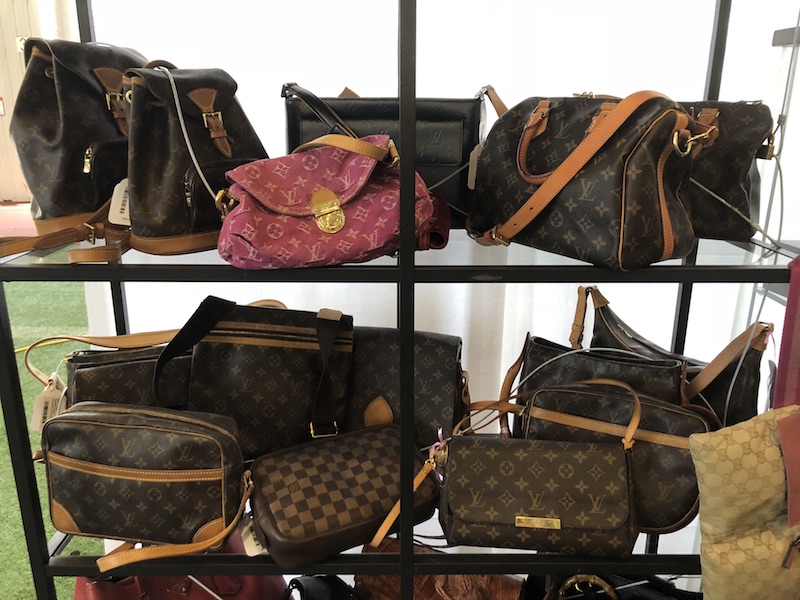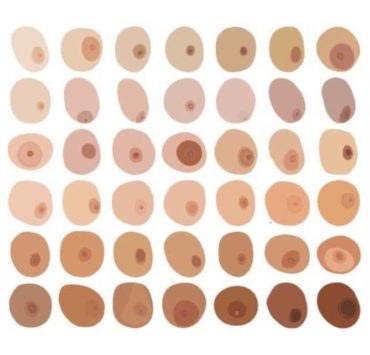The Ultimate Guide to Vintage Shopping for College Students: Part 2

Matias Bessai is an 18-year-old student currently enrolled in his…
This is the second part of my ultimate guide to shopping vintage. Click here for the first part.
Personalization
As I mentioned previously, there are a lot of ways to salvage a piece that doesn’t quite fit or is slightly damaged. If you have bought clothing that is sitting in your wardrobe because of these problems, think about what exactly the look you pictured was, and then get creative.
The easier aspect of personalization is the deconstruction of a piece. When I say deconstruction, I mean it in a productive sense, as in cropping, cutting, shredding, dyeing, and other methods of changing the form of a piece to make it work for you.
Deconstruction can be done from home, with the help of YouTube tutorials for perfectionists, or freestyle for the more experimental individuals, and is particularly effective for denim and cotton products, since they both have become popularly associated with deconstructed styles in the last 10 years.
Whether you decide you want to take three inches of length off the bottom of your jeans and leave the legs frayed at the bottom, or you want to cut massive holes in a hoodie and hold the garment together with safety pins, the great part about deconstruction is that it is entirely up to you and what you can create. It also takes the personal aspect of vintage one step further, making your piece a true one of a kind, and a response to the item’s heritage.
Alternatively, if you are looking to professionally adjust your vintage garments, that is an equally effective option. Sometimes when it comes to the cut of piece you love, you can’t risk putting it on the line just to satisfy your creative instincts.
Bringing vintage items to a local sewing specialist is a great way to ensure that cuts are adjusted to the millimeter, and damages like zippers, seams, and ripping can be properly dealt with. If they tell you a piece is beyond saving then maybe that is a sign that the garment is in desperate need of some creative reinvention, and at that point, what else do you have to lose? Go crazy with it.
Understanding the value of vintage pieces
Fast fashion has changed the way we shop by offering trend-oriented clothing on a mass scale for low prices. This has made it easy for shoppers to get used to coming into a store with $200 and leaving with a completely new wardrobe every season.
I am not here to point fingers or say that this is a bad thing, because I am just as guilty of it as anyone. The point I am trying to make is that those shopping habits are not meant to transfer into vintage shopping.
The majority of the work done by vintage shop owners is sourcing pieces for the store. Every item inside is selected with the hope that someone will not only appreciate the history of it, but identify with that history personally, and truly want to wear it.
If you are looking to shop for a piece that you might only wear on a few occasions, it may be more in your interest to go to a traditional retail store. That way you won’t be buying up vintage items that someone else may have wanted more than you, while also paying a much lower price.
Travel vintage shopping
When you are visiting a new country, taking in the culture in an authentic way is something everyone looks for. A really fun way to go about this is vintage shopping. Exploring international vintage gives you a glimpse at the heritage of fashion in the given country while also allowing you to find pieces that can be personal souvenirs of your trip.
The most important step when it comes to vintage shopping in different countries is, again, research. Applying the same tips mentioned in Part 1, research is going to save you countless hours of aimless roaming, especially when you aren’t familiar with the streets you are walking.
I have found that having a detailed plan of where you want to go and how you will get there, is essential to making the most of your time. Taking advantage of the resources on your smartphone can help with this, by using a mapping app for example, to plot out the shops you are looking for with real-time directions.
Sourcing designer vintage
Unexpectedly coming across a piece of designer fashion in a thrift store is every vintage enthusiast’s dream, but how many can actually say they have had that happen to them? Designer vintage is like the elusive mystery that keeps us coming back, because we remain hopeful that one day, we will stumble upon it.
Instead of stumbling, there are a few ways to increase your ability to source designer products, that begin with knowing where to look. Imagine it like an eco-system. Products begin in thrift stores or donation centers, they are hunted by curated vintage owners, and from there they move higher and higher up the chain until they are in the stores of the top dogs, designer consignment.

Designer consignment stores are amazing in a lot of ways, because they know exactly what their products are worth, they can ensure the legitimacy of the product, they too pride themselves on curation, and they offer entry-level consumers the chance to make designer fashion a part of their wardrobe. If you woke up one morning and said, “today is the day I get my first designer product”, you could do that very reasonably by going to a consignment store and come out having spent less than $100 in a lot of cases.
That being said, there will always be a population of vintage shoppers that will continue to test their luck in hunting designer in lower-priced environments. I wish there was a secret I could give them but in reality, it just comes down to the commitment to the hunt.
Sourcing designer online
Another, more recent way to purchase second-hand designer products is through online forums like Grailed (I use Grailed as an example in this case because in my personal experience, I have found it to be user friendly, safe, and fair). On this digital marketplace, people offer their second-hand clothing for sale, while the staff focus on specifically categorizing products, and ensuring that the transactions taking place involve authentic products and payment.
From my experience, Grailed is a step up from designer consignment for several reasons. Firstly, it has such a massive inventory of products that you can find virtually any size or colorway you could want. Second, it is a competitive marketplace where sellers must price their items in an auction format, while also considering the offers being made by sellers sharing their category.
Because of these factors, as a shopper, you have much more freedom of choice and a massive amount of price flexibility that cannot be found at brick and mortar shops. The drawback is that there is always a level of skepticism that should be associated with making purchases from unknown sources, and horror stories do unfortunately exist.
While I know from experience that it can be frustrating and tedious to spend longer than an hour flipping through racks in vintage stores, don’t let that stop you from doing something you love. Vintage is, and always will be there for those willing to look. Good luck!
Do you have what it takes to write about fashion?
Apply now and get published on RGNN!




